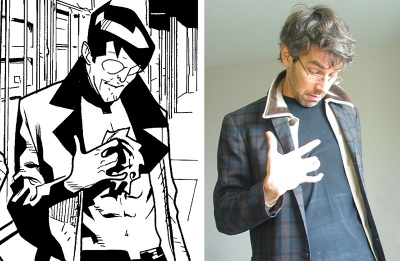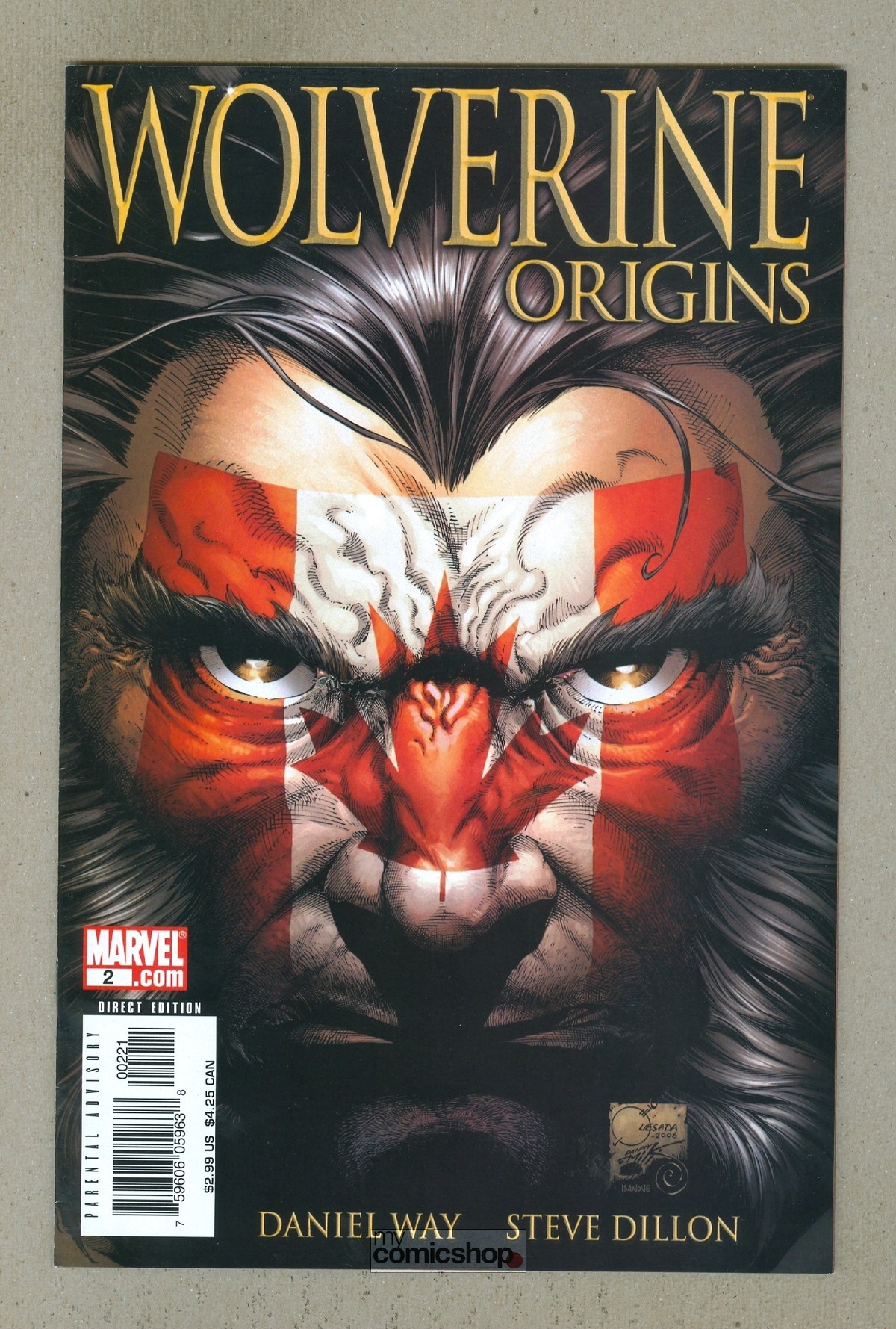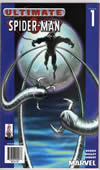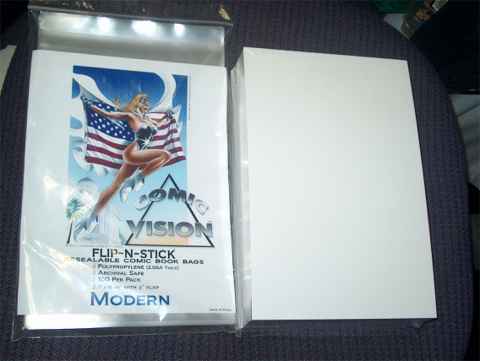Photo Reference – As you may have guessed this is an art term. It means that the artist has used a photo to draw what you see on the page. It can be anything from a park bench to a city landscape to something even more specific like a person performing an action or a landmark specific to a town/city. Photo reference is still very controversial in comics, some believe that it’s just tracing and that the artist shouldn’t be given credit while others feel that it’s acceptable to help meet monthly deadlines and is still valid work. You can choose for yourself as there are a lot of takes on this argument to be found on the interweb. Swipe or Swipe File – You can’t talk about photo reference without bringing up swiping. Largely because it’s the biggest part of photo-reference-is-bad side of the argument. A swipe is when an artist copies another artist’s work or sometimes redraws over their own work. Using one’s own photo for the reference is fine, but some artist have a swipe file which is a file filled with still photos from magazines that they then draw the character over the pose in the photo which is not acceptable since it’s using someone else’s work. One of the biggest contributors to the swipe is Greg Land. This is one you need to see to fully understand so I’ve included a link to better help along with a picture from Bleeding Cool.
Swipe or Swipe File – You can’t talk about photo reference without bringing up swiping. Largely because it’s the biggest part of photo-reference-is-bad side of the argument. A swipe is when an artist copies another artist’s work or sometimes redraws over their own work. Using one’s own photo for the reference is fine, but some artist have a swipe file which is a file filled with still photos from magazines that they then draw the character over the pose in the photo which is not acceptable since it’s using someone else’s work. One of the biggest contributors to the swipe is Greg Land. This is one you need to see to fully understand so I’ve included a link to better help along with a picture from Bleeding Cool.
Variant Cover – Besides saving the comic industry, a variant is a rare printing of an issue with a different cover. Let’s say that Marvel prints 1,000 issues of a title and then prints a variant for every 100 of those copies. That would mean there are only ten copies of that variant making it very, very rare. A lot of people never even get see variants on the shelf because they are removed from the normal stack or sent separately from the order. Then the price is jacked up at the shop to make back the money spent on ordering enough issues to get the variant. The trend now is that they’ll be more than one variant (which personally has hurt the desire for variants) for the issue. Meaning they’ll be a variant for every ten issues printed then another for every twenty-five and then another for every one hundred. The sad part is that variants used to be relatively unknown and so retailers wouldn’t even notice them and put them out on the shelves so that some lucky reader could buy an ultra-rare issue and not even know it. Now unless you’re a regular at the comic shop you may not even get a chance to buy it as some regular probably has dib’s on it first.
Second Print - If you were to try and sell a second printing of X-Men #1 for the same amount as a first printing of X-Men #1 you would be laughed at and mocked. A second printing is when a company sends the issue back to the printers and creates more issues. This usually happens when an issues is very popular and has exceeded the expectations set forth before the original print. Second issues are great because sometimes people just want to read the book and don’t care about its value. No one wants to miss out on the next big title and the second printing gives them a chance to be a part of it. It’s also great for collectors because it raises the value of the first printing giving them a chance to sell it for profit or keep it till its value crashes.
 Rare – Again, you can’t talk about one without the other so with second printings comes rare issues. These are in a lot of cases variant covers with small print runs. Other times though, they are misprinted issues that shouldn’t have been released or everyone’s favorite… an independent publishers break out hit comic that they could only afford to print so many of. Here are some examples: Ultimate Spider-Man #1 Target Edition in which the cover and interior is actually of issue 14 (I own this issue) fetches in the hundreds of dollars to those looking to buy it. 30 Days of Night #1 again this one usually goes for at least $300 dollars. An example of a book that should have been destroyed but made it out the door is Elektra #3 which had a nude Elektra that wasn’t approved by Marvel and they had them destroyed… but some made it out the door. This one flip flops on price a lot depending on demand and how many people are tired of owning their copy. My personal rare issue that I want but don’t want to pay for is Walking Dead #2 which had a smaller print run than the first issue and now fetches at $100 bucks. I could have bought it for $50 but that was too much for me to spend… now I regret it.
Rare – Again, you can’t talk about one without the other so with second printings comes rare issues. These are in a lot of cases variant covers with small print runs. Other times though, they are misprinted issues that shouldn’t have been released or everyone’s favorite… an independent publishers break out hit comic that they could only afford to print so many of. Here are some examples: Ultimate Spider-Man #1 Target Edition in which the cover and interior is actually of issue 14 (I own this issue) fetches in the hundreds of dollars to those looking to buy it. 30 Days of Night #1 again this one usually goes for at least $300 dollars. An example of a book that should have been destroyed but made it out the door is Elektra #3 which had a nude Elektra that wasn’t approved by Marvel and they had them destroyed… but some made it out the door. This one flip flops on price a lot depending on demand and how many people are tired of owning their copy. My personal rare issue that I want but don’t want to pay for is Walking Dead #2 which had a smaller print run than the first issue and now fetches at $100 bucks. I could have bought it for $50 but that was too much for me to spend… now I regret it.
Back Issues - This actually covers a lot of what you see when you walk into a comic shop. Everything you see sitting on the shelf that's not a new releases... is a back issue. It's as simple as that, everything that wasn't released that week is a back issue. Where people start getting confused its usually due to the way the shop has labeled it's back issues. In a lot of cases their back issues end up being comics from the 90's or issues that are a few months old. To many these are treasures waiting to be found and to others they are the missing book to complete a run or storyline. To the shop keepers though, they are simple books they didn't sell and now have to sit on. On the shop level it comes down to how the shop wants to make money. Some will keep books up to six months old sitting side by side with the new releases, while others will move and catalog them with the rest of the issues that didn't sell.
 Stay tuned for part 3!
Stay tuned for part 3!